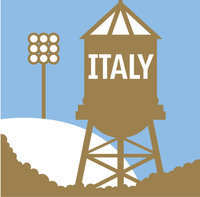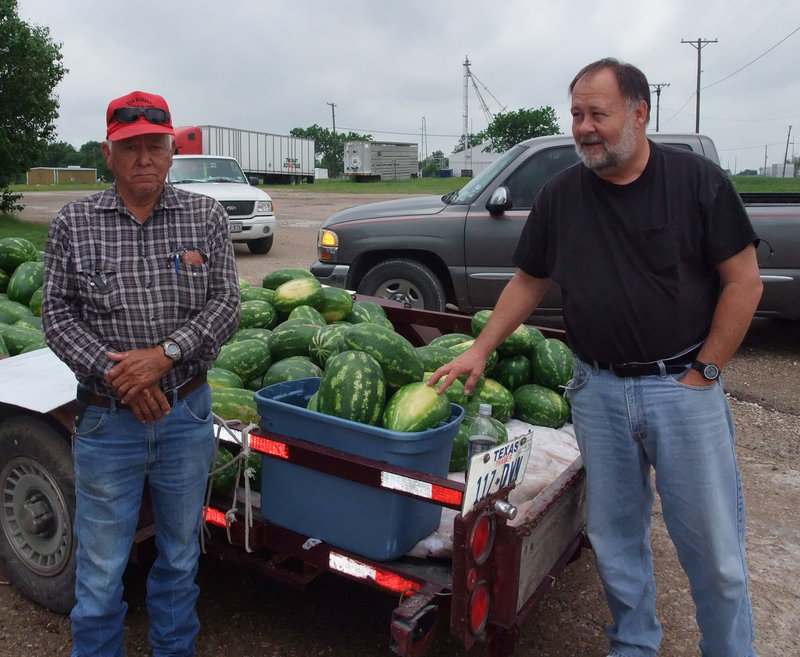Wild about watermelon!
I’ll take this one…no…this one! — Rory Reeves tries to pick out the perfect watermelon with the assistance of Luciano Garza, the watermelon wizard. (Barry Byers)
That’s right! These watermelons are grown in Texas by members of the Garza family that reside in San Manuel. The price is $7.00 for a large watermelon and the smaller melons are 2 for $5.00.
The creative sign Luciano uses to advertise on the trailer is half cut watermelon that displays all you need to know about the quality of the produce. Plus, if you want to buy several at a time, Luciano will be glad to “cut” you a good deal.
Maybe your planning a picnic or just want a fun snack to enjoy while sitting on your tailgate to watch a baseball game, the Garza Family has a treat for you!
So look for Luciano’s signature red trailer and friendly smile, then pull in for a laugh or two. I guarantee you’ll leave with a great tasting watermelon and a smile yourself.
FYI — I noticed Mr. Garza’s watermelon trailer is setup across from the Harris Paint & Body Shop again this morning, enjoy!
Watermelons are fat free and low in calories and hence is considered to be the ideal diet food.
While picking out a watermelon, ensure that it is symmetrical with no cuts and bruises. A watermelon that is ripe will have a healthy sheen, a dull rind and a dull yellow spot on its underside on which it touched the ground. To confirm that the melon is completely ripe, thump it and the sound should be dull and hollow while the weight of the watermelon should be heavy considering its size.
Here are some very interesting facts about the Watermelon:
- Watermelon is actually a vegetable and not a fruit. It is also related to the pumpkin, cucumber and the squash.
- The watermelon (Citrullus Lanatus) are the natives of the Kalahari desert found in Southern Africa.
- Watermelon consists of 92% water and 8% sugar.
- Watermelons were brought to China across the Mediterranean sea in merchant ships. Incidentally, China is the largest producer of watermelons in the world today.
- As watermelon is about 92% water, early explorers used watermelons as a canteen.
- Every part of the watermelon, including the seeds and the rind is edible.
Watermelons are ideal for the health as they do not contain any fat or cholesterol and are high in fiber content and vitamins A and C and are also a good source of potassium.
- Over 1200 varieties of watermelon are grown in approximately 100 countries across the world.
- Watermelons are very fragile and cannot be harvested with the help of machines. Instead they are carefully tossed by workers on a relay that runs between the fields and the truck.
- The first recorded watermelon harvest was in Egypt and it took place nearly 5000 years ago. This is depicted in the Egyptian hieroglyphics that is found in ancient buildings. As a matter of fact, watermelons were also placed in the tombs of kings to help them nourish in the after life.
- The largest consumption of watermelon is in the United States when considered by the weight of the watermelon.
- The first cookbook that was published in the United States in 1176 contained a recipe for watermelon rind pickles.
- Bill Carson of Arrington, Tennessee grew a 262 pound watermelon in 1990. This feat found a place in the 1998 edition of the Guinness World Book of Records.
- Watermelon became a part of the dictionary in 1615.

